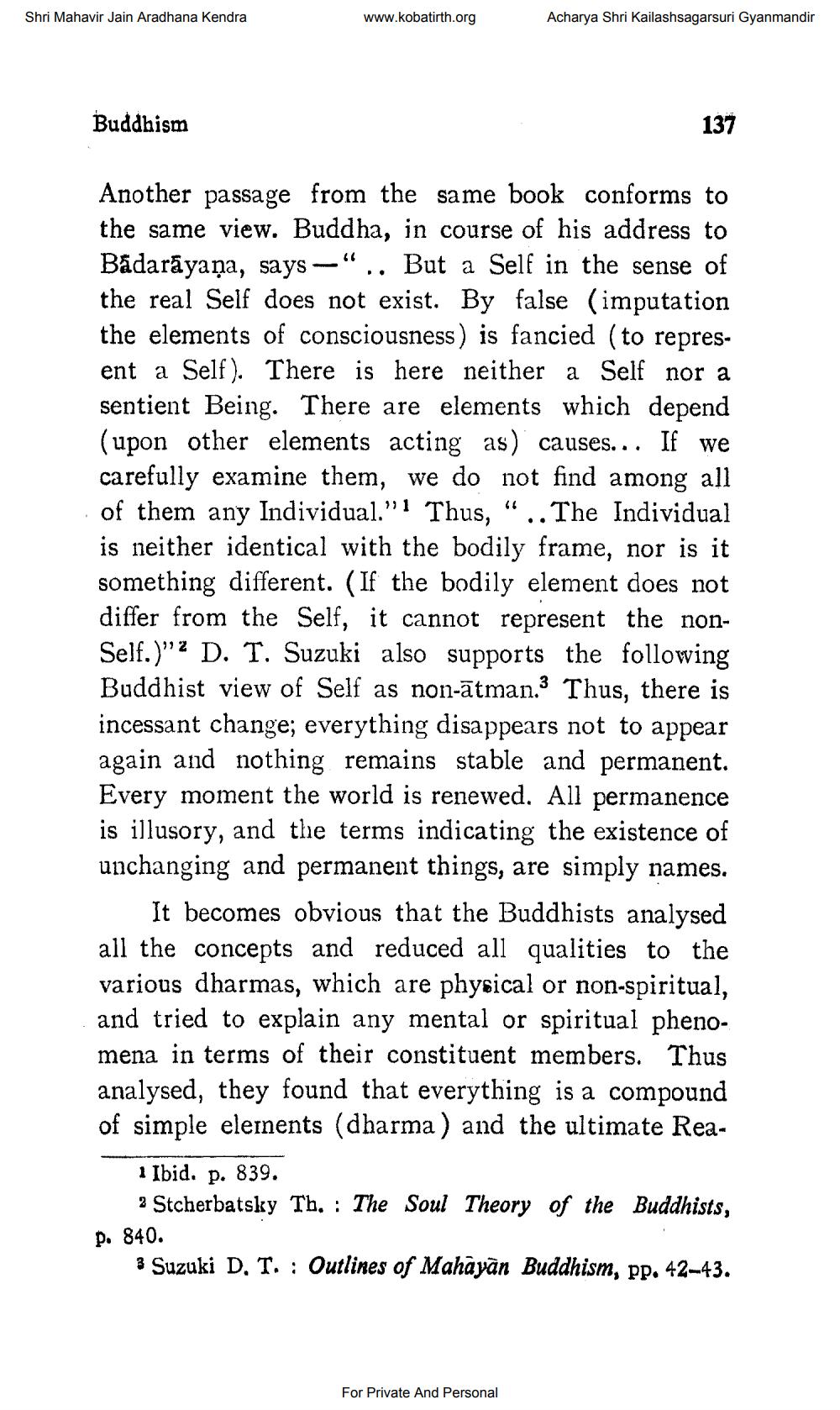________________
Shri Mahavir Jain Aradhana Kendra
www.kobatirth.org
Acharya Shri Kailashsagarsuri Gyanmandir
Buddhism
137
Another passage from the same book conforms to the same view. Buddha, in course of his address to Badarāyaṇa, says —".. But a Self in the sense of the real Self does not exist. By false (imputation the elements of consciousness) is fancied (to represent a Self). There is here neither a Self nor a sentient Being. There are elements which depend (upon other elements acting as) causes... If we carefully examine them, we do not find among all of them any Individual."! Thus, “.. The Individual is neither identical with the bodily frame, nor is it something different. (If the bodily element does not differ from the Self, it cannot represent the nonSelf.)”2 D. T. Suzuki also supports the following Buddhist view of Self as non-ātman. Thus, there is incessant change; everything disappears not to appear again and nothing remains stable and permanent. Every moment the world is renewed. All permanence is illusory, and the terms indicating the existence of unchanging and permanent things, are simply names.
It becomes obvious that the Buddhists analysed all the concepts and reduced all qualities to the various dharmas, which are physical or non-spiritual, and tried to explain any mental or spiritual phenomena in terms of their constituent members. Thus analysed, they found that everything is a compound of simple elernents (dharma) and the ultimate Rea
1 Ibid. p. 839.
2 Stcherbatsky Th. : The Soul Theory of the Buddhists, p. 840.
3 Suzuki D, T. : Outlines of Mahāyān Buddhism, pp. 42-43.
For Private And Personal




